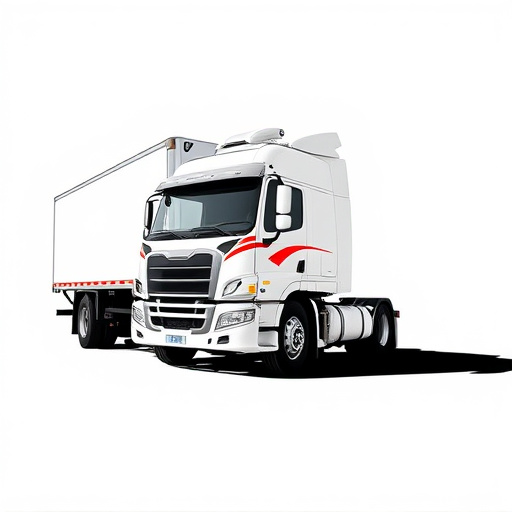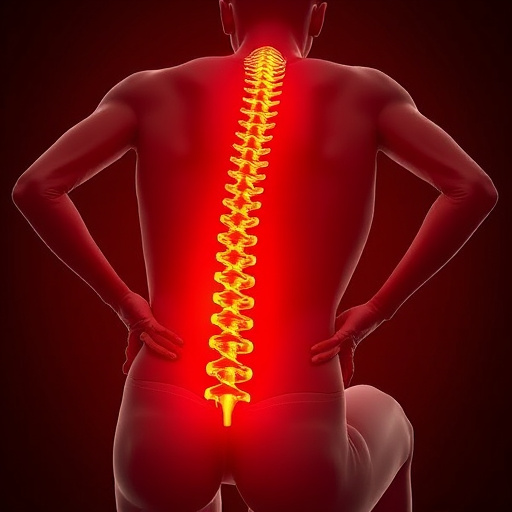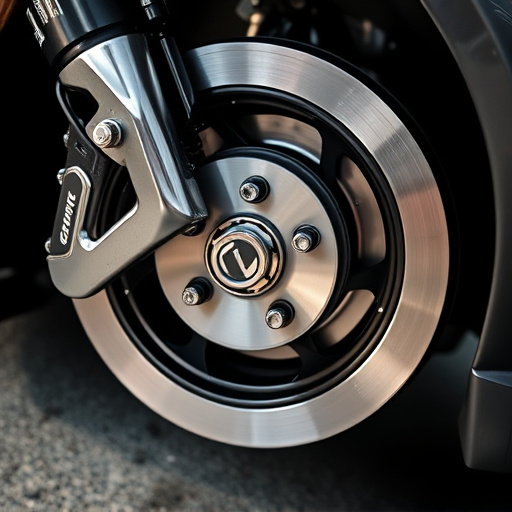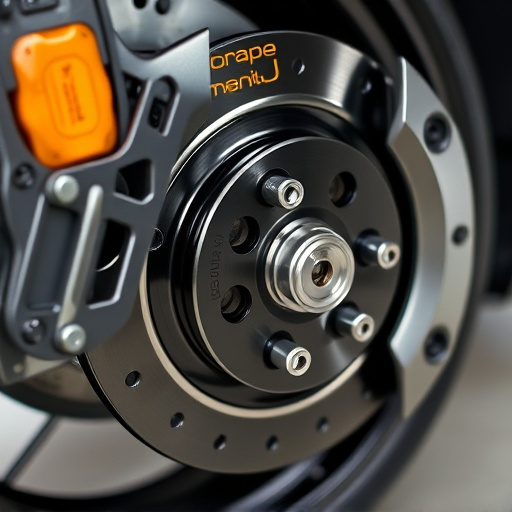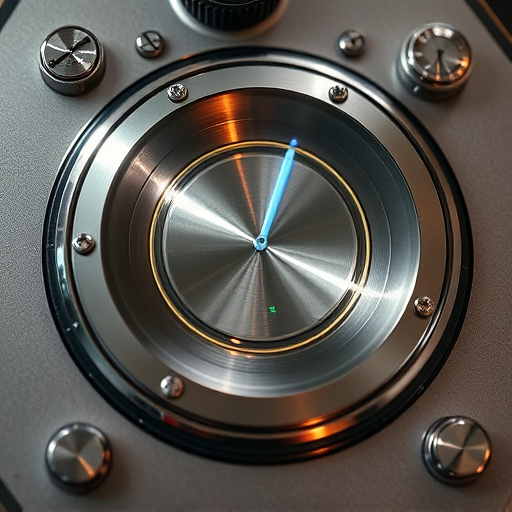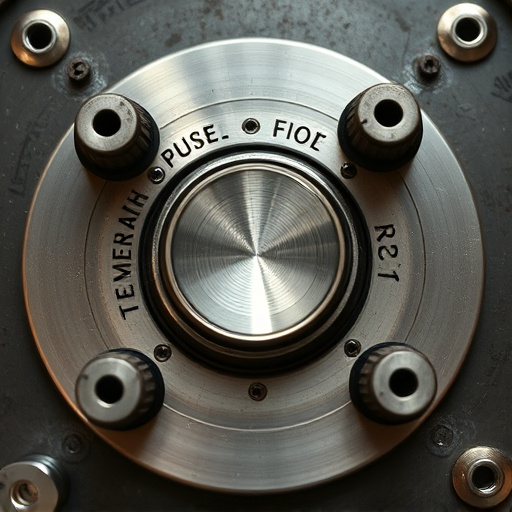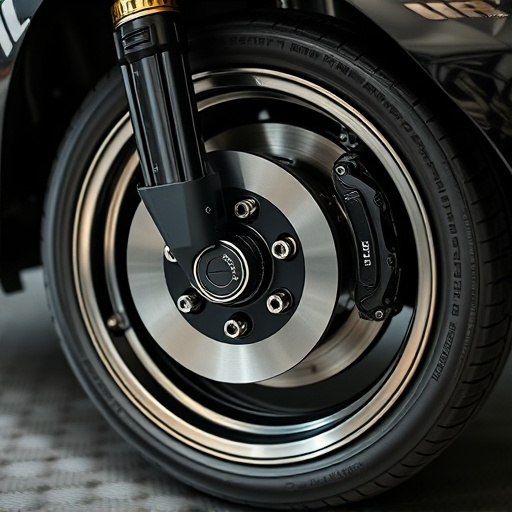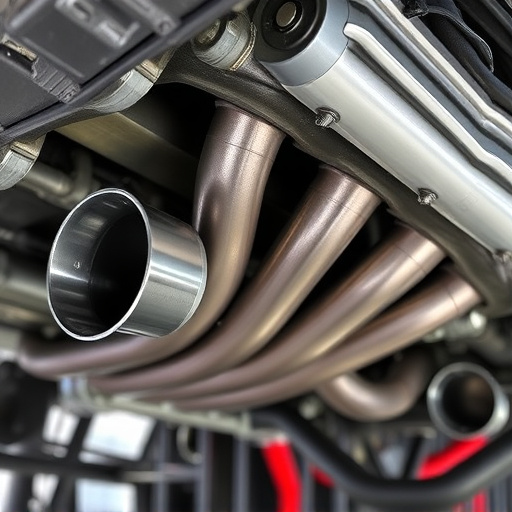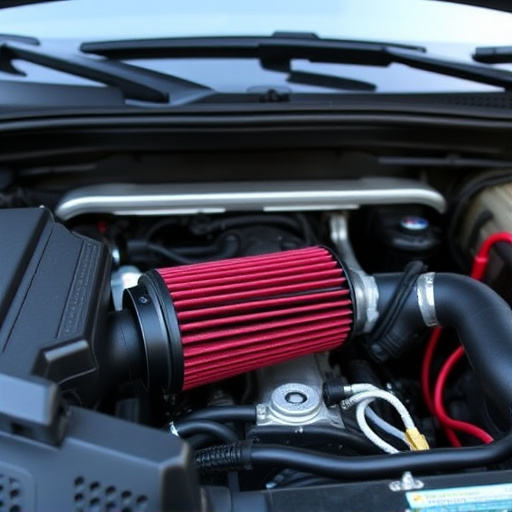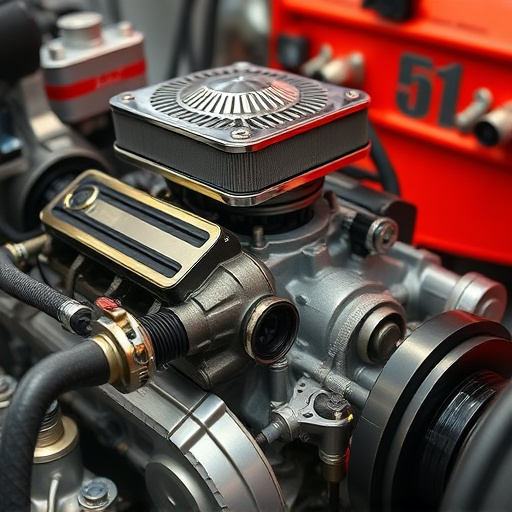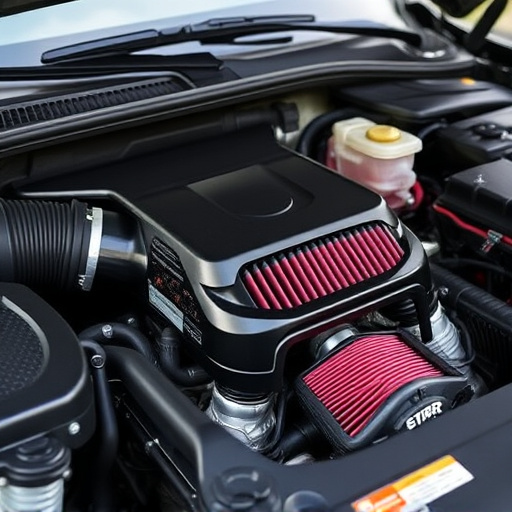Regular maintenance and upgrades to the engine air intake system are vital for vehicle performance. Replacing filters and parts ensures optimal airflow, efficiency, and horsepower. Timely replacements complement exhaust systems, enhancing overall vehicle condition. The systematic installation process includes tools, disassembly, cleaning, inspection, and secure reattachment of components.
Considering a replacement for your engine air intake? It’s a smart move for optimal car performance. This guide breaks down everything you need to know before diving in. From understanding the basics of engine air intakes to identifying the need for a replacement and learning effective installation steps, this article is your go-to resource. Discover why regular maintenance on your engine air filter is crucial and learn how to ensure a smooth, efficient process.
- Understanding Engine Air Intake Basics
- Reasons for Replacing Your Engine Air Filter
- Steps to Replace Engine Air Intake Effectively
Understanding Engine Air Intake Basics
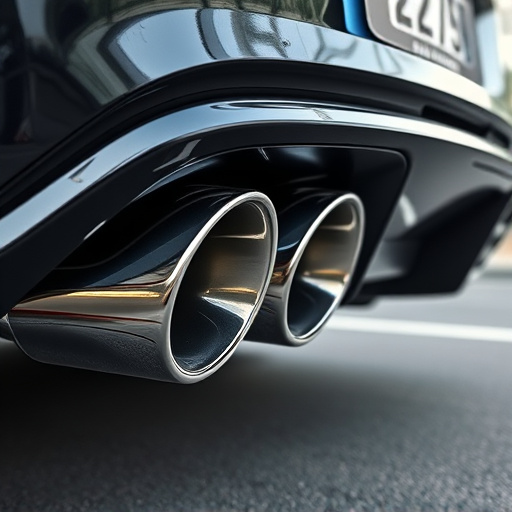
The engine air intake system is a vital component of any vehicle’s performance and efficiency. It serves as the entry point for atmospheric air, which is then compressed and mixed with fuel to power the engine. Understanding this basic function is crucial before undertaking any modifications or replacements. The system comprises several parts, including the air filter, which traps contaminants; the mass airflow sensor, measuring incoming air volume; and various tubes and housing that direct air flow.
Properly maintaining and replacing these components is essential for optimal engine performance. Over time, the air intake can become contaminated with dirt or debris, affecting air flow and engine efficiency. Upgrading to a high-flow air filter or replacing worn parts can improve airflow, boost horsepower, and enhance overall vehicle performance. Moreover, when considering modifications, such as installing a cat-back exhaust system or upgrading brake components, understanding the interconnection between these systems and the engine air intake is key to ensuring seamless integration and maximizing gains.
Reasons for Replacing Your Engine Air Filter
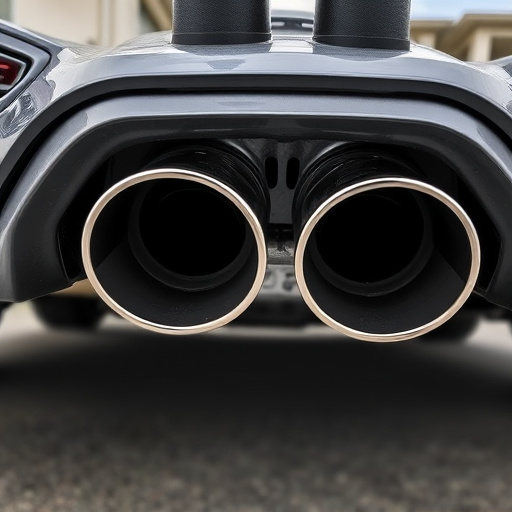
Over time, your engine air filter can become clogged with dirt, dust, and other debris, restricting airflow to your engine. This not only reduces fuel efficiency but can also lead to a host of performance issues. A replacement is often necessary when you notice a decrease in power, increased fuel consumption, or difficulty starting the engine. Regular maintenance, including timely air filter replacements, is key to keeping your engine air intake system functioning optimally.
Additionally, older or damaged filters may allow contaminants to enter the engine, potentially causing wear and tear on internal components. To maintain a healthy engine, it’s essential to consider replacing your air filter as part of your regular maintenance routine. Moreover, keeping your engine air intake clean can complement other upgrades like cat back exhaust systems and exhaust mufflers, ensuring your vehicle performs at its best across the board.
Steps to Replace Engine Air Intake Effectively
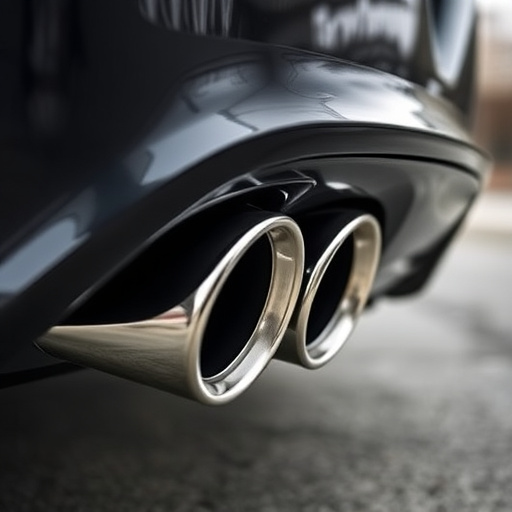
Replacing your engine’s air intake effectively involves a systematic approach to ensure optimal performance and efficiency. First, gather all necessary tools and replacement parts, including a new air filter, intake tube, and any other specific intake components. Make sure the area around the engine is clean and accessible to facilitate the process. Next, locate the existing air intake system, typically found near the engine, and disconnect it carefully. This may involve removing exhaust mufflers or other components in the way.
Once exposed, inspect the old air intake for any damage or debris. Clean the area thoroughly to ensure proper adhesion of new parts. Install the new air filter according to the manufacturer’s instructions, ensuring a secure fit. Connect the intake tube and verify that all connections are tight and sealed. Check the direction of airflow and adjust as needed to align with the vehicle’s specifications. Finally, reattach any disconnected exhaust mufflers or other components, ensuring a seamless integration of the new air intake system.
Before tackling an engine air intake replacement, grasp the fundamentals of your vehicle’s air intake system and the common reasons for a change, such as clogged filters. Then, follow a structured approach to ensure the process is done effectively. Understanding these aspects will empower you to make informed decisions and maintain your engine’s performance through proper air intake management.

